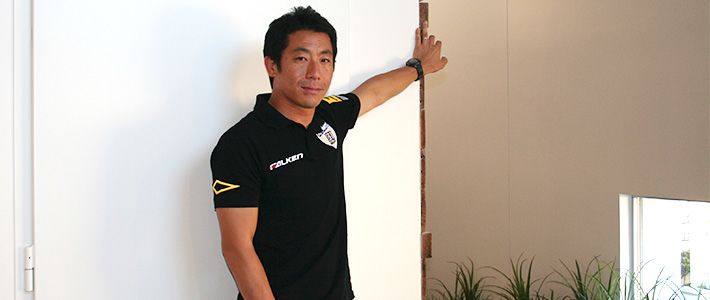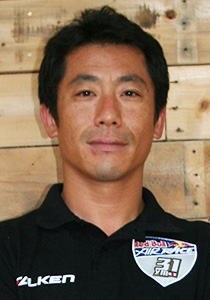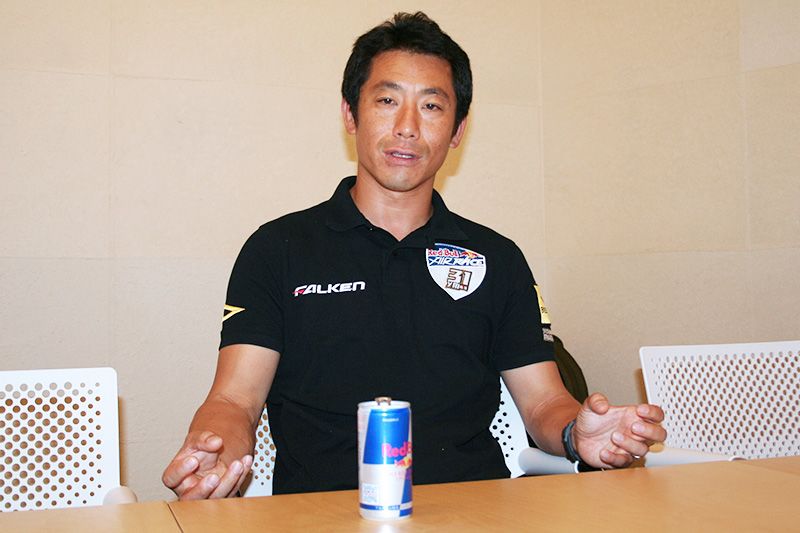
From "Porco Rosso" to the Red Bull Air Race: Pilot Muroya Yoshihide’s Route to the Top
Culture- English
- 日本語
- 简体字
- 繁體字
- Français
- Español
- العربية
- Русский
The Only Way Is Up
The official homepage for Muroya Yoshihide, Asia’s first Red Bull Air Race pilot, boldly declares that the “sky is the limit.” Taking some of his unassuming, almost lackadaisical, interview responses at face value, however, one might wonder how he has reached the stage of competing in what has been called the “world’s fastest motorsport.” He described near-monthly setbacks and said that his training is “just normal” and “not especially hard.”
“Plan? I never had any plan. I just earned as much money as I could working part time in Japan and put as much of it as I could into training in the States.”
Muroya was a typical boy, fond of soccer, and spellbound by Mobile Suit Gundam and the anthropomorphic pig pilot of Studio Ghibli’s Kurenai no buta (released in English as Porco Rosso). He dreamed of flying a plane himself and finally took to the skies in a glider, after joining the aviation club at his university in 1991.
In 1993, he traveled to the United States and earned his pilot’s license. He then qualified as a gliding instructor in Japan. While teaching Japanese students to glide, he honed his skills by entering domestic competitions and learning techniques for long-distance flying in Australia. Passing on his knowledge to students gave him confidence in his mastery of the cockpit and he began to imitate aerobatic stunts.
In 1995, the Breitling World Cup, an aerobatics tournament, was held in Japan for the first time. It was Muroya’s earliest opportunity to see the world’s best aerobatic pilots in action and he was stunned. “Compared with what I’d been doing, it was a completely different level.” The shock he received from witnessing these pilots’ brilliance lit a small flame of competitiveness within him.
“Being a teacher should have given me confidence, but there was such a gulf in technique between me and those other pilots. If I wanted to reach the top, I had to enter their world,” he remembers. “They were so far out of reach that I couldn’t even imagine what I had to do. It was like I’d fallen in love with the moon.”
Muroya needed more time, but his journey had begun.
Paying His Way
In 1997, there were no facilities teaching aerobatics in Japan, so Muroya had to use money saved from working part time to attend pilot school in the United States. He could also have gone to Europe, but chose the United States because it was cheaper. Funding his training was a major hurdle and he faced numerous challenges due to his limited capital, level of technique, and unfamiliarity with the American aircraft. When he was short of cash in hand, he would polish the planes in exchange for an hour of flying, putting all his efforts into making the most of his time away from Japan.
“The visa I had then didn’t allow me to work locally, so every time I ran out of money, I went back to Japan for more part-time jobs. If the hourly pay was good, I did anything from construction to delivery work. I worked day and night doing mainly physical labor.”
Muroya did not rest when he was saving funds for his American training. He worked a maximum 500 hours a month, and there were times he earned as much as ¥500,000 or ¥600,000. He prides himself on his physical fitness, but during this period when he says he barely slept, even he admits to feeling tired and listless.
Getting a Plane and a Sponsor
As Muroya says, he did not have any plan. He just had the youthful dream of developing his skills until he could join the world’s top pilots at the pinnacle of the sport and look down on the scenery below. Despite all of the money and time he had invested, nothing was waiting for him after leaving pilot school. He had no job offers as an aerobatics pilot or at a company in a related field.
“If I didn’t have my own plane, nothing would get started. I had to buy one.” He put all the money he could borrow—some 30 million yen—into acquiring his first plane, a Sukhoi Su-26, and only then did he look for a sponsor. This reckless spirit may be Muroya’s true strength.
In 2003, he founded Fukushima Flight Association, a nonprofit organization that became his base for operations. In the same year, the Red Bull Air Race World Championship was launched, attracting the world’s top pilots. This new competition, in which every millisecond counts, became a distant target for Muroya, although, as he puts it, “it was like a little league baseball player dreaming of making it to the major leagues.”
In 2006, Air Race sponsor Red Bull entered the Japanese market, and when it started sponsoring Muroya the following year, the competition suddenly appeared to be within reach. After spending seven months at a training camp in 2008, he achieved his dream of competing in the world championship for the first time in 2009.
Then came the Great East Japan Earthquake in 2011. The airfield he trained on in the city of Fukushima suffered extensive damage, including cracks in the runway. Although he was used to setbacks, Muroya thought seriously again about quitting aerobatics. He was encouraged to continue by his FFA colleagues and others.
A Chance to Compete in Japan
Muroya appears to be a man of action rather than words. He was forced to overcome his reticence as he was thrust into the media spotlight when it was decided to hold a stage of the 2015 Air Race Championship in the city of Chiba—the first time the competition has taken place in Japan.
Before the competition, while he was still struggling to tune the engine of his new Edge 540 V3, he spoke positively to acknowledge the local crowd who had turned out to support him. “I know the area, so I have home advantage,” he said. “I’m in extremely good shape, but still at 99%, so I want to take it to 100%.”
In the first round, Muroya achieved the fastest time in the competition of 50.779 seconds. Unfortunately, in the second one-on-one round, he accelerated too greatly and was disqualified for exceeding 10G.
His next two races, preceding this interview, were also frustrating, yet he did not appear discouraged. “I can’t say I’m not disappointed. Of course, I am. But the plan had actually been to test out the new plane this year and start using it next year.” He adds, “Saying that I’m ‘satisfied’ with the Chiba result would make my supporters angry, but it was a reasonable result in the sense that we were able to debut the new plane as a team and try out some of its features.”
Later in the season, he matched his previous best of third place at races in Ascot, the United Kingdom, and Indianapolis, the United States. He began the 2016 World Championship season, which started last month, with a seventh-place finish in Abu Dhabi, the United Arab Emirates. Winning the championship this year will be a tough proposition, but it is not impossible, if he can develop the right system. Muroya is now one of the world’s top aerobatic pilots, competing as a respected rival, and no longer looking on as an outsider.
(Originally written in Japanese by Miki Takajirō of Nippon.com and published on September 10, 2015. Based on an interview conducted at Red Bull Japan in Shibuya, Tokyo, on July 21, 2015. )
